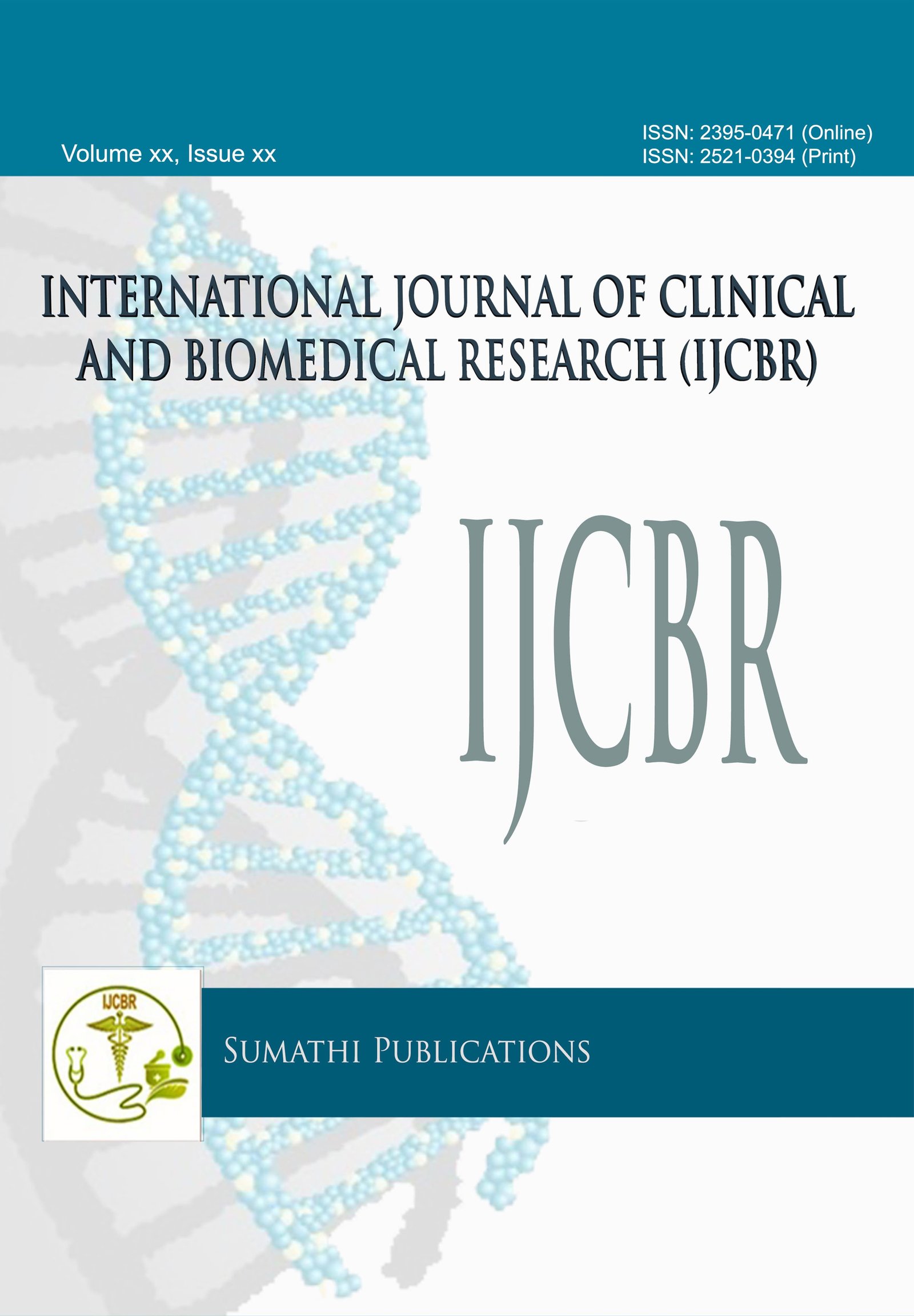TYPES OF SUTURING AND THEIR CLINICAL OUTCOME IN OPERATED PATIENTS IN A RURAL TERTIARY CARE SETUP
DOI:
https://doi.org/10.5455/ijcbr.2017.34.19Abstract
Introduction: The present study was aimed at different modalities of abdominal skin suturing techniques and their outcome in various abdominal skin incisions. Material and methods: All the patients above the age of 18 years irrespective of gender who were undergoing abdominal surgeries and getting sutured by either Simple, mattress, subcuticular or tension sutures were included in the study. The demography, diagnosis, type of wound & suture and its outcome was followed till day 14. Results: A total of 120 randomly selected cases with different abdominal incisions and different suturing techniques associated with co-morbid factors were selected. Majority of cases i.e, 40 (33.3%) belonged to inguinal hernia, followed by appendicitis, intestinal perforation, intestinal obstruction. Age of 61 to 70 was the most common age group. Most of the cases had clean wound (59) followed by clean contaminated (27) and contaminated wounds (28). The types of sutures observed were simple, mattress, subcuticular and tension, which were done in 30, 24, 30 and 31 patients respectively. Among these the least complications were seen with subcuticular followed by simple type of sutures. The groups of the types of suture used were not comparable due to difference in the type of wound and disease in the patients. Conclusion: Although every type of suture has its own advantages, disadvantage, indications and contraindications, simple and subcuticular sutures have better outcome as compared to other forms of suture.
Key words: Abdominal incisions, Clinical outcomes, Suturing techniques.
Downloads
Downloads
Published
Issue
Section
License
The journal allows the author(s) to hold the copyright without restrictions and will retain publishing rights without restrictions.
The submitted papers are assumed to contain no proprietary material unprotected by patent or patent application; responsibility for technical content and for protection of proprietary material rests solely with the author(s) and their organizations and is not the responsibility of the journal. The main (first/corresponding) author is responsible for ensuring that the article has been seen and approved by all the other authors. It is the responsibility of the author to obtain all necessary copyright release permissions for the use of any copyrighted materials in the manuscript prior to the submission.
What are my rights as an author?
It is important to check the policy for the journal to which you are submitting or publishing to establish your rights as
Author. Journal's standard policies allow the following re-use rights:
- The journal allows the author(s) to hold the copyright without restrictions.
- The journal allows the author(s) to obtain publishing rights without restrictions.
- You may do whatever you wish with the version of the article you submitted to the journal.
- Once the article has been accepted for publication, you may post the accepted version of the article on your own personal website, your department's website or the repository of your institution without any restrictions.
- You may not post the accepted version of the article in any repository other than those listed above (i.e. you may not deposit in the repository of another institution or a subject-matter repository) until 12 months after publication of the article in the journal.
- You may use the published article for your own teaching needs or to supply on an individual basis to research colleagues, provided that such supply is not for commercial purposes.









